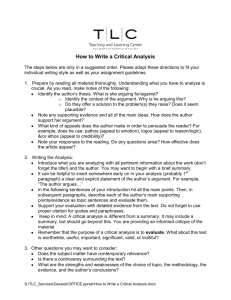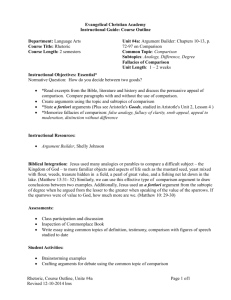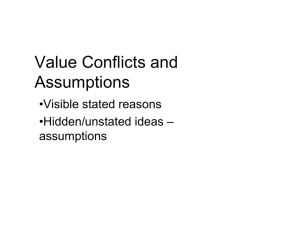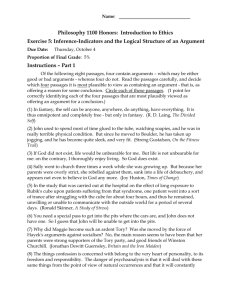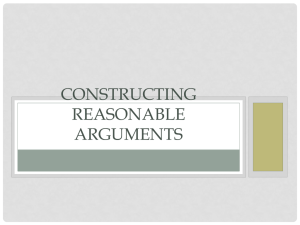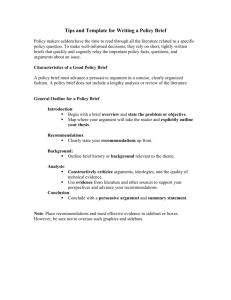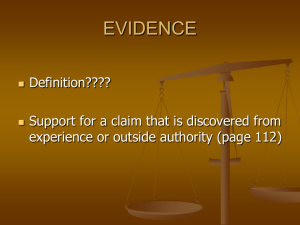Introduction to Logical Thinking
advertisement
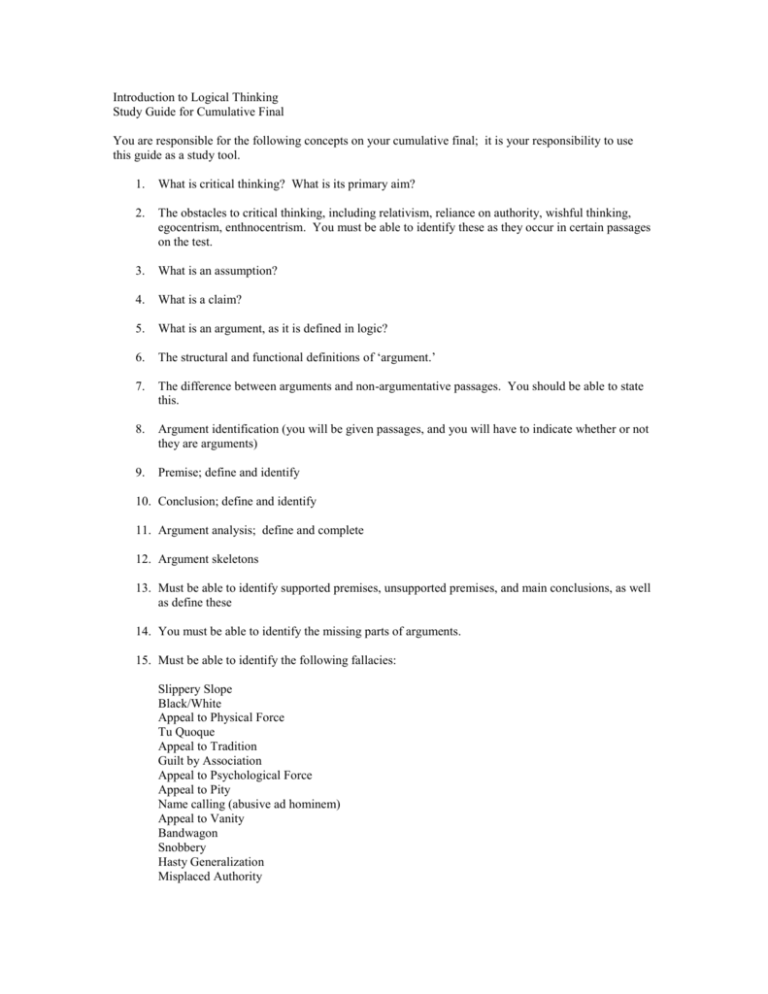
Introduction to Logical Thinking Study Guide for Cumulative Final You are responsible for the following concepts on your cumulative final; it is your responsibility to use this guide as a study tool. 1. What is critical thinking? What is its primary aim? 2. The obstacles to critical thinking, including relativism, reliance on authority, wishful thinking, egocentrism, enthnocentrism. You must be able to identify these as they occur in certain passages on the test. 3. What is an assumption? 4. What is a claim? 5. What is an argument, as it is defined in logic? 6. The structural and functional definitions of ‘argument.’ 7. The difference between arguments and non-argumentative passages. You should be able to state this. 8. Argument identification (you will be given passages, and you will have to indicate whether or not they are arguments) 9. Premise; define and identify 10. Conclusion; define and identify 11. Argument analysis; define and complete 12. Argument skeletons 13. Must be able to identify supported premises, unsupported premises, and main conclusions, as well as define these 14. You must be able to identify the missing parts of arguments. 15. Must be able to identify the following fallacies: Slippery Slope Black/White Appeal to Physical Force Tu Quoque Appeal to Tradition Guilt by Association Appeal to Psychological Force Appeal to Pity Name calling (abusive ad hominem) Appeal to Vanity Bandwagon Snobbery Hasty Generalization Misplaced Authority
